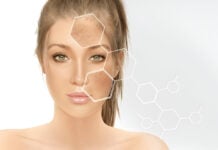When it comes to treating pre-cancerous skin lesions, early intervention is key. Among the emerging treatments, photodynamic therapy (PDT) stands out as a targeted, minimally invasive option that is gaining popularity in dermatologic practice. It is particularly effective for conditions like actinic keratosis (AK), a precursor to squamous cell carcinoma, and superficial basal cell carcinoma (sBCC), the most common form of skin cancer.
What is Photodynamic Therapy?
Photodynamic therapy involves three essential components: a photosensitizing agent, a light source, and oxygen. First, the photosensitizer, commonly aminolevulinic acid (ALA) or methyl aminolevulinate (MAL), is applied topically to the lesion. Over a few hours, it is selectively absorbed by abnormal cells. These cells convert the compound into a light-sensitive form, protoporphyrin IX (PpIX). Once activated by a specific wavelength of light, reactive oxygen species are generated that destroy the targeted cells without harming the surrounding healthy tissue (Braathen et al., 2007).
Effectiveness in Actinic Keratosis
Actinic keratoses are scaly, rough patches caused by chronic sun exposure and are considered early-stage squamous cell carcinomas. PDT is widely endorsed for treating multiple or widespread lesions, especially on cosmetically sensitive areas like the face and scalp.
Clinical studies show clearance rates of 70 to 90 percent for AKs treated with PDT, particularly when multiple sessions are employed (Moy et al., 2022). Compared to cryotherapy, PDT offers better cosmetic results and allows for treatment of larger surface areas in one session.
Moreover, daylight PDT is a variant using natural sunlight instead of artificial light. It has gained traction for being less painful and more convenient. A 2020 review confirmed that daylight PDT is equally effective for thin AKs and is far more tolerable for patients (Togsverd-Bo et al., 2020).
Use in Basal Cell Carcinoma
Basal cell carcinoma, though rarely life-threatening, can be locally destructive. PDT is especially beneficial for superficial BCC, offering a non-invasive option for patients who may not be candidates for surgery or who prefer to avoid scarring.
Studies show that MAL-PDT achieves complete response rates up to 90 percent in superficial BCC (Basset-Seguin et al., 2008). However, its effectiveness drops significantly for nodular or infiltrative types, which often require surgical excision or Mohs micrographic surgery.
PDT also offers an excellent cosmetic profile, with fewer pigmentary changes and less scarring compared to traditional surgical methods. This makes it particularly suitable for lesions on the face and other visible areas.
Advantages and Limitations
Pros:
- Non-invasive with minimal discomfort
- Excellent cosmetic outcomes
- Can treat multiple lesions simultaneously
- Quick recovery and outpatient procedure
Cons:
- Pain or burning during light exposure
- Limited depth of penetration, so ineffective for deeper tumors
- Requires strict post-procedure light avoidance
- Potential for recurrence in high-risk lesions
Who Should Consider PDT?
Photodynamic therapy is ideal for:
- Patients with field cancerization, meaning multiple AKs in sun-damaged areas
- Those with superficial BCC who prefer non-surgical options
- Individuals concerned about cosmetic outcomes
- Elderly patients or those with comorbidities that limit surgical options
However, it is not recommended for patients with porphyria, photosensitivity disorders, or invasive skin cancers that penetrate deep into the dermis.
The Future of PDT
Researchers are continuously working to enhance PDT outcomes. Novel photosensitizers with deeper skin penetration, combination therapies, and more refined light delivery systems are under investigation. Additionally, nano-carrier systems and immunomodulatory combinations are promising areas for improving efficacy and minimizing recurrence.
Photodynamic therapy has transformed the way dermatologists manage pre-cancerous skin lesions. Its ability to precisely target abnormal cells while sparing healthy tissue makes it a valuable tool in treating actinic keratosis and superficial basal cell carcinoma. Though not suitable for all skin cancers, PDT offers a well-tolerated, cosmetically superior alternative for many patients. As research progresses, its role in dermatologic oncology is likely to expand, offering hope for even more refined and personalized treatments.
References:
- Basset-Seguin, N., Ibbotson, S. H., Emtestam, L., Tarstedt, M., Morton, C. A., Maroti, M., … & Szeimies, R. M. (2008). MAL-PDT for superficial basal cell carcinoma: a randomized study comparing two PDT sessions with one. British Journal of Dermatology, 158(1), 33–40. https://doi.org/10.1111/j.1365-2133.2007.08302.x
- Braathen, L. R., Szeimies, R. M., Basset-Seguin, N., Bissonnette, R., Foley, P., Pariser, D., … & Wennberg, A. M. (2007). Guidelines on the use of photodynamic therapy for nonmelanoma skin cancer: an international consensus. Journal of the American Academy of Dermatology, 56(1), 125–143. https://doi.org/10.1016/j.jaad.2006.03.035
- Moy, R. L., Luftman, D., & Kamell, R. (2022). Photodynamic therapy for actinic keratoses: current perspectives. Clinical, Cosmetic and Investigational Dermatology, 15, 1245–1254. https://doi.org/10.2147/CCID.S363167
- Togsverd-Bo, K., Haedersdal, M., & Wulf, H. C. (2020). Daylight photodynamic therapy for actinic keratosis: an updated overview. Photodiagnosis and Photodynamic Therapy, 30, 101800. https://doi.org/10.1016/j.pdpdt.2020.101800












